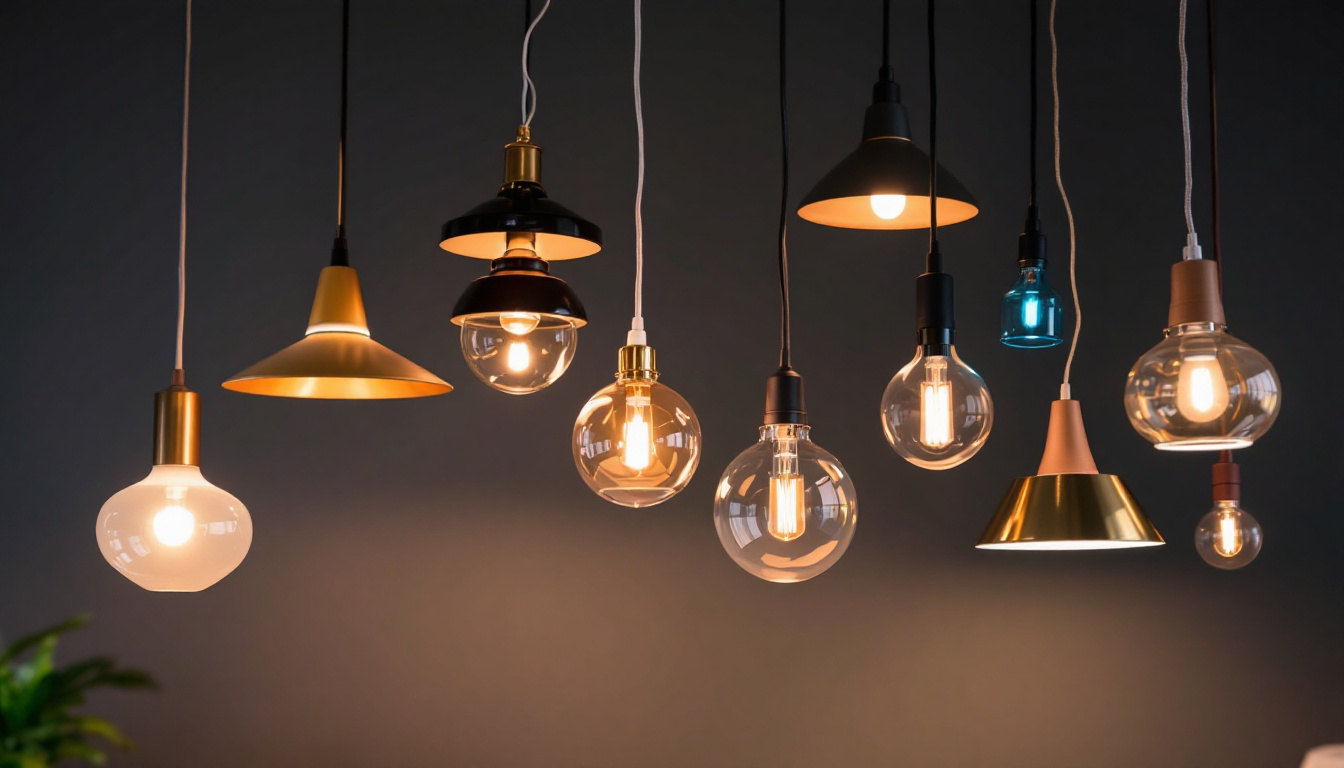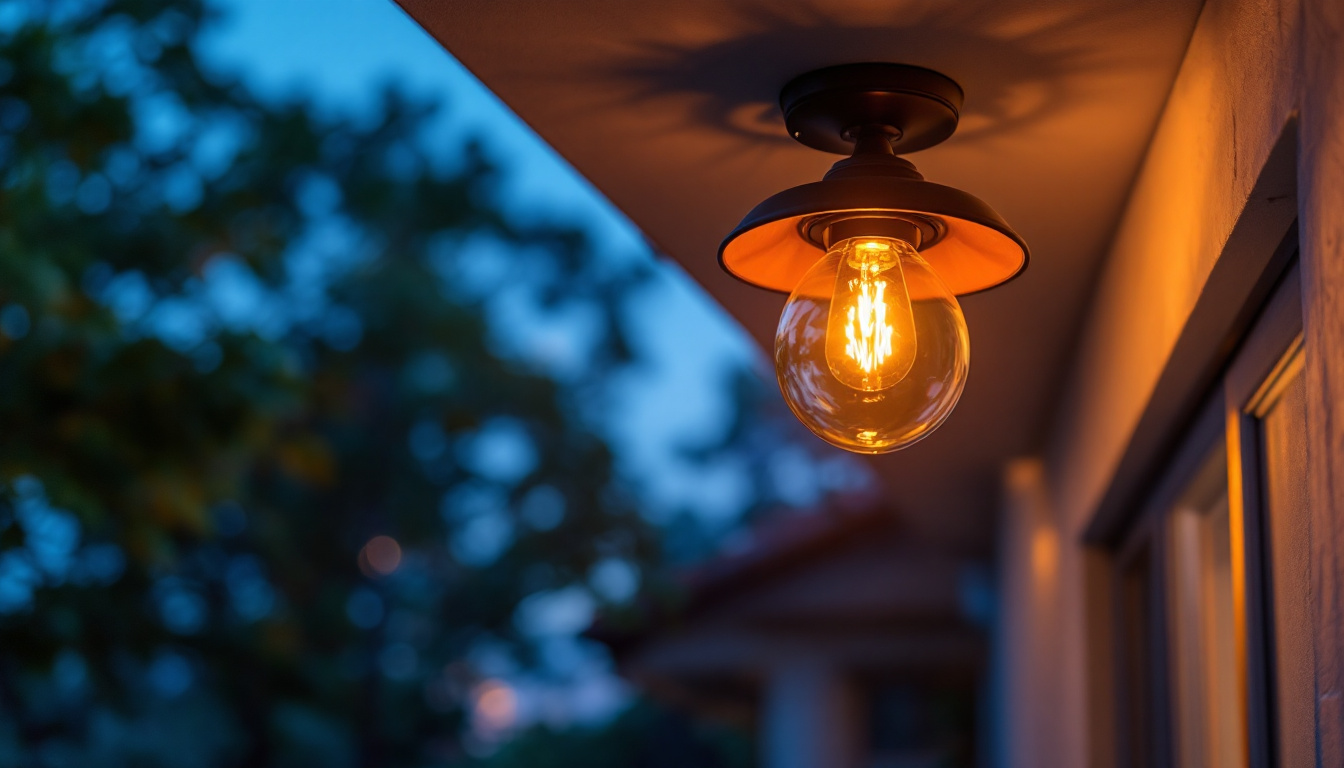
hanging lighting pendants have become a staple in modern interior design, offering both functionality and aesthetic appeal. These versatile fixtures can transform spaces, providing illumination while serving as striking decorative elements. For lighting contractors, understanding the nuances of hanging pendants is essential for delivering projects that not only meet client expectations but also stand the test of time. The variety of styles available, from sleek and minimalist designs to ornate and vintage-inspired pieces, allows for a wide range of applications, making them suitable for various settings, including residential homes, restaurants, and commercial spaces. Additionally, the choice of materials, such as glass, metal, or fabric, can significantly influence the overall ambiance of a room, enhancing the intended atmosphere.
Future-proofing lighting projects is a crucial consideration in today’s rapidly evolving technological landscape. As energy efficiency standards tighten and design trends shift, the ability to adapt and evolve is paramount. This article explores key strategies for selecting and implementing hanging lighting pendants that will remain relevant and effective for years to come. One important aspect to consider is the integration of smart technology, which allows for customizable lighting experiences through apps and voice control. This innovation not only enhances user convenience but also aligns with the growing demand for sustainable living solutions. Furthermore, selecting LED bulbs for hanging pendants can significantly reduce energy consumption while providing a longer lifespan, making them an eco-friendly choice that appeals to environmentally conscious consumers.
Before delving into future-proofing strategies, it’s important to grasp the fundamental aspects of hanging lighting pendants. These fixtures come in various styles, sizes, and materials, making them suitable for diverse applications—from residential kitchens to commercial spaces.
Typically suspended from the ceiling by a cord, chain, or rod, pendants can provide direct or ambient lighting, depending on their design. The choice of bulb, wattage, and fixture placement significantly influences the overall lighting effect, making it essential for contractors to consider these factors during installation.
Hanging pendants can be broadly categorized into several types, each serving unique purposes. Some of the most common types include:
The materials used in pendant construction can significantly affect their durability and aesthetic appeal. Common materials include glass, metal, and fabric, each offering distinct advantages. For instance, glass pendants can create an elegant look while allowing light to diffuse beautifully, whereas metal fixtures may provide a more industrial or contemporary vibe.
When selecting materials, contractors should consider not only the design preferences of their clients but also the longevity and maintenance requirements of each option. Choosing high-quality materials can enhance the lifespan of the fixture and reduce the need for frequent replacements.
As energy efficiency becomes increasingly important, contractors must prioritize sustainable lighting solutions in their projects. Hanging lighting pendants can be designed to accommodate energy-efficient bulbs, such as LED or CFL options, which consume significantly less energy than traditional incandescent bulbs.
Incorporating energy-efficient lighting not only reduces utility costs for clients but also aligns with global sustainability goals. Additionally, many regions offer incentives for energy-efficient installations, making it a financially savvy choice for both contractors and clients.
When selecting bulbs for hanging pendants, it’s essential to consider the lumen output, color temperature, and energy consumption. LED bulbs, for example, are available in various color temperatures, allowing contractors to create the desired ambiance in a space.
Furthermore, the long lifespan of LED bulbs means less frequent replacements, reducing waste and maintenance costs. By educating clients on the benefits of energy-efficient lighting, contractors can help them make informed decisions that contribute to future-proofing their lighting projects.
With the rise of smart home technology, integrating smart lighting systems into hanging pendant installations is becoming increasingly popular. Smart lighting allows users to control their fixtures remotely, adjust brightness levels, and even change color temperatures through mobile apps or voice commands.
By incorporating smart lighting into projects, contractors can enhance the functionality of hanging pendants, making them more appealing to tech-savvy clients. This integration not only adds convenience but also positions the project as forward-thinking and adaptable to future technological advancements.
Staying abreast of design trends is crucial for contractors aiming to deliver contemporary and appealing lighting solutions. Current trends in hanging lighting pendants reflect a blend of functionality and artistic expression, allowing for creativity in design.
Contractors should consider how these trends can be incorporated into their projects to ensure they resonate with clients and stand the test of time. Here are some notable trends to watch:
Minimalist design continues to dominate the interior design landscape, with clean lines and simple forms taking center stage. Hanging pendants that embody this aesthetic often feature geometric shapes and understated finishes, allowing them to blend seamlessly into various environments.
Choosing minimalist designs can help future-proof lighting projects, as these styles tend to remain relevant despite changing trends. They offer versatility, making them suitable for a range of applications, from modern homes to commercial spaces.
Industrial and vintage-inspired hanging pendants have made a significant comeback, appealing to those who appreciate a nostalgic aesthetic. These designs often feature raw materials, such as exposed bulbs, metal finishes, and distressed wood, creating a sense of character and warmth.
Incorporating these styles into projects can attract clients looking for unique and personalized lighting solutions. As trends in interior design evolve, the charm of industrial and vintage styles is likely to endure, making them a wise choice for future-proofing.
Proper installation is critical to ensuring the longevity and functionality of hanging lighting pendants. Contractors must adhere to best practices to avoid common pitfalls that could lead to premature failures or safety hazards.
From ensuring secure mounting to considering the weight of the fixture, attention to detail during installation can make a significant difference in the performance of hanging pendants. Additionally, understanding local electrical codes and regulations is essential for compliance and safety.
Determining the appropriate height and placement for hanging pendants is crucial for both aesthetics and functionality. Pendants should be hung at a height that provides adequate illumination without obstructing views or creating glare.
For dining areas, a common guideline is to hang pendants approximately 30 to 36 inches above the table. In kitchen settings, pendants should be spaced evenly over islands or counters to ensure even lighting distribution. By carefully considering placement, contractors can enhance the overall effectiveness of their lighting designs.
Ensuring proper wiring and electrical connections is vital for the safety and reliability of hanging pendants. Contractors should use high-quality wiring and connectors that can handle the load of the fixtures being installed.
Additionally, understanding the power requirements of different bulbs and fixtures is essential for preventing electrical issues. By prioritizing safety and compliance during installation, contractors can help future-proof their projects against potential electrical failures.
Even the most beautifully designed hanging lighting pendants require maintenance to keep them looking and functioning their best. Educating clients on proper care and maintenance can extend the lifespan of fixtures and ensure ongoing satisfaction.
Regular cleaning, bulb replacement, and inspection of electrical connections are essential components of maintenance. Contractors should provide clients with clear guidelines on how to care for their hanging pendants, helping to foster a sense of ownership and responsibility.
Cleaning hanging pendants can vary depending on the materials used. For glass fixtures, a gentle glass cleaner and soft cloth can effectively remove dust and fingerprints without damaging the surface. Metal fixtures may require a different approach, using appropriate cleaners that won’t cause corrosion or tarnishing.
By demonstrating proper cleaning techniques during the installation process, contractors can empower clients to maintain their lighting fixtures effectively, ensuring they continue to enhance the space for years to come.
As technology advances, clients may wish to upgrade their bulbs for improved energy efficiency or enhanced features. Contractors should advise clients on the best options for bulb replacements, considering factors such as compatibility and performance.
Encouraging clients to opt for energy-efficient bulbs can contribute to long-term savings and sustainability goals. By providing insights into the latest lighting technologies, contractors can position themselves as valuable resources for clients seeking to future-proof their lighting systems.
Hanging lighting pendants offer a unique opportunity for lighting contractors to create stunning and functional spaces. By understanding the fundamentals of these fixtures, prioritizing energy efficiency, staying informed about design trends, and ensuring proper installation and maintenance, contractors can future-proof their lighting projects.
As the lighting industry continues to evolve, embracing innovative technologies and sustainable practices will be key to remaining competitive. By focusing on quality, aesthetics, and adaptability, contractors can deliver lighting solutions that not only meet current demands but also anticipate future needs.
Ultimately, the goal is to create spaces that inspire and delight clients, ensuring that hanging lighting pendants remain a cherished feature in their homes and businesses for years to come.
Ready to elevate your lighting projects with the latest in hanging pendant designs and future-proof solutions? Look no further than LumenWholesale. Our commitment to quality and affordability ensures that you have access to the best spec-grade lighting products at wholesale prices. Say goodbye to inflated markups and hello to a vast selection of reliable, high-performance lighting that meets the highest industry standards. Plus, with free shipping on bulk orders, you can get the premium lighting you need at the best value — all without hidden fees or compromises. Don’t miss out on the perfect blend of quality, affordability, and convenience. Visit LumenWholesale today and discover the best value in wholesale lighting for your next project.

Discover essential tips and expert insights for lighting contractors on installing big shop ceiling fans.

Discover why the LED Bulb T Type is revolutionizing the lighting industry and becoming a must-have for contractors.

Discover how lighting contractors can elevate their projects with the right ceiling outdoor light fixtures.

Discover why the 8ft LED light fixture is becoming an essential component in modern lighting projects.